Some of the most famous artists of the past century also dabbled in creating jewels-and their miniature masterpieces are stunning to behold.
When creating a list of the most well-regarded artists in the world, Pablo Picasso, Salvador Dalí, and Alexander Calder would absolutely be at the top. The works they are famous for tend to be grand in scale or impact: paintings that hang in the hallowed halls of world-renowned museums; iconic sculptures that loom large. And yet these artists also created miniature masterpieces as amateur jewelers.
There could be an entire thesis (and indeed there most certainly has been) on the divisions between traditional fine art and the decorative arts—but what’s truly interesting is how many of the best-known artists of the 20th and 21st centuries dabbled in and tinkered with jewelry. Artists like Louise Nevelson, Man Ray, Jean Arp, Alberto Giacometti, Antony Gormley, Louise Bourgeois, and Giorgio de Chirico all created jewelry, either themselves or with the aid of a jeweler. The list goes on and on, and covers nearly every artistic movement of the past century.
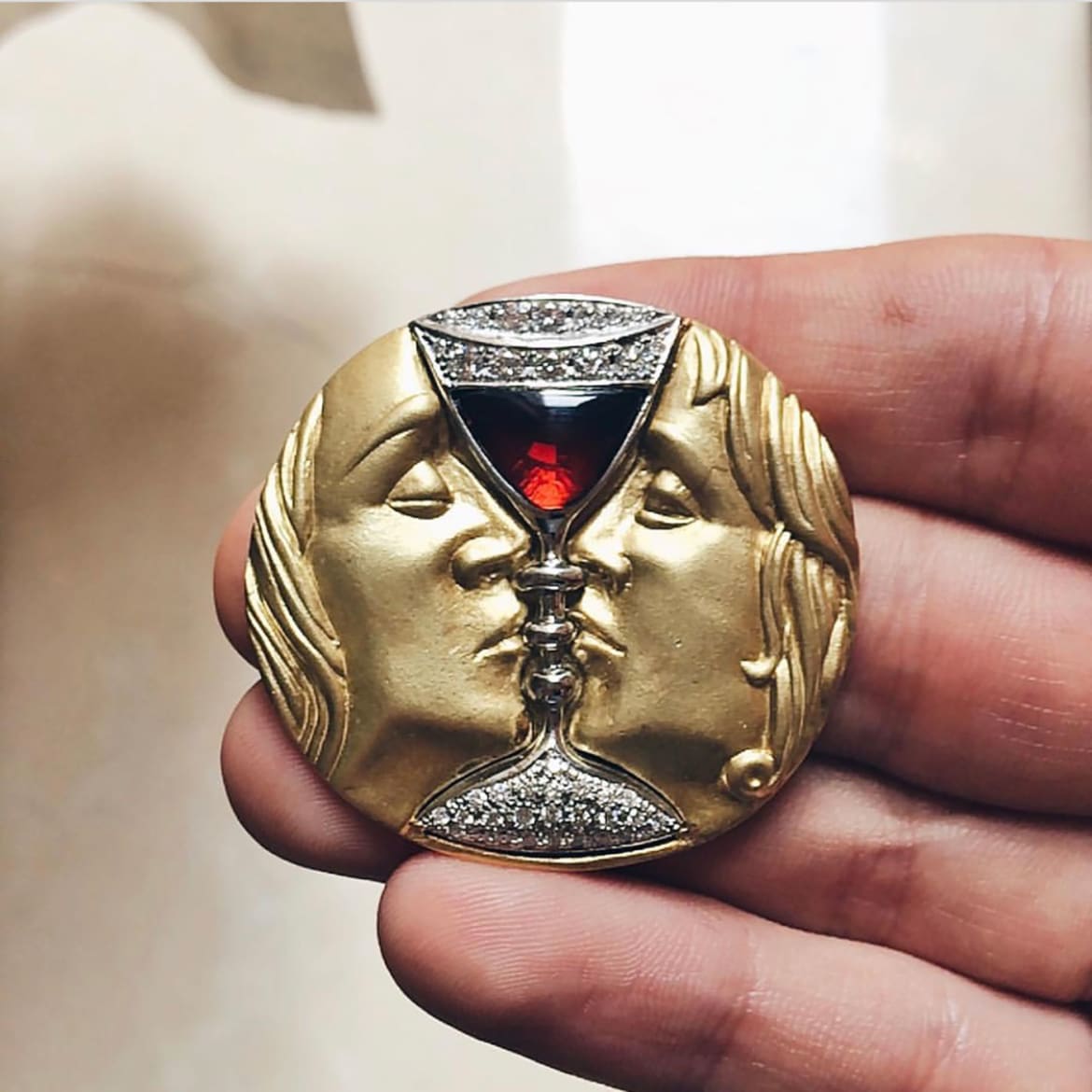
LEVI HIGGS (@LEVI_HIGGS) & @DIDIERLTD - A stunning brooch designed by Salvador Dali.
Perhaps then, it should come as no surprise that an artist like Salvador Dalí counted jewels among his many disparate and seemingly absurd projects. Did you know he also designed provocative window displays for the New York department store Bonwit Teller in 1939, and when they were altered without his permission, he pushed a bathtub through one of the windows onto the street?
Still, jewels were the perfect medium for the extravagant Dalí. The artist started designing jewelry with a 22-piece collection in 1941, and worked with jeweler Fulco di Verdura to realize those pieces. At the time, Verdura was also designing jewelry for Coco Chanel, and Dalí had had a working relationship with Elsa Schiaparelli, a fashion designer with a surrealist lilt.
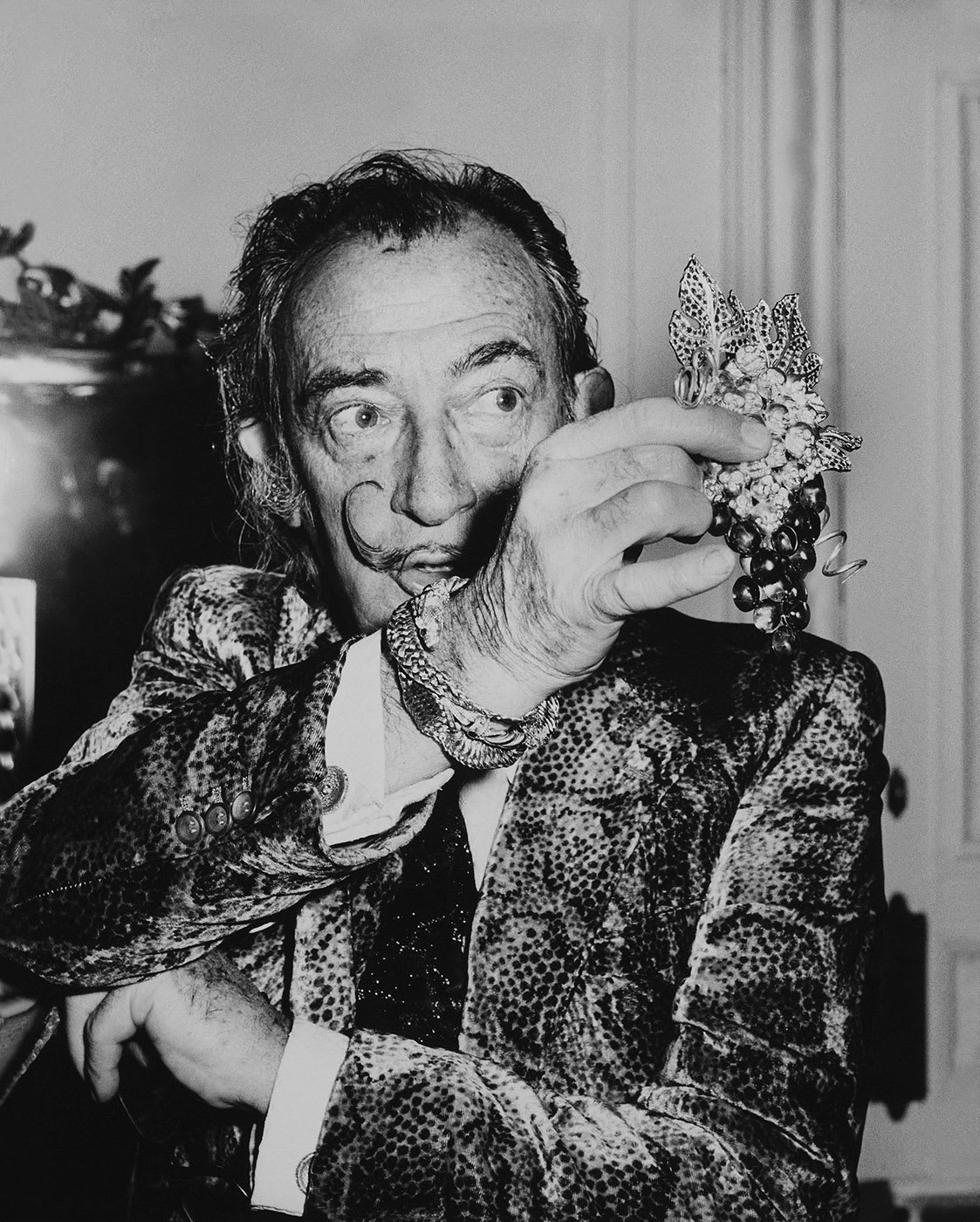
KEYSTONE-FRANCE/GAMMA-KEYSTONE/GETTY - Salvador Dali, showing off his bejeweled "grapes of immortality."
Dalí’s most iconic jewel is The Eye of Time, a brooch made of diamonds and ruby with the face of a clock imposed within an eye that sheds a single tear. A Dalí brooch made with rubies as lips and pearls for teeth is said to be inspired by the smile of Mae West. Naturally, his jewels are provocative and opulent. A selection of his jewels were on view at the El Morocco Nightclub in New York, and were viewed by the likes of Elizabeth Taylor in the 1950s. In 1959, Dalí was quoted saying, “In jewels, as in all my art, I create what I love.”
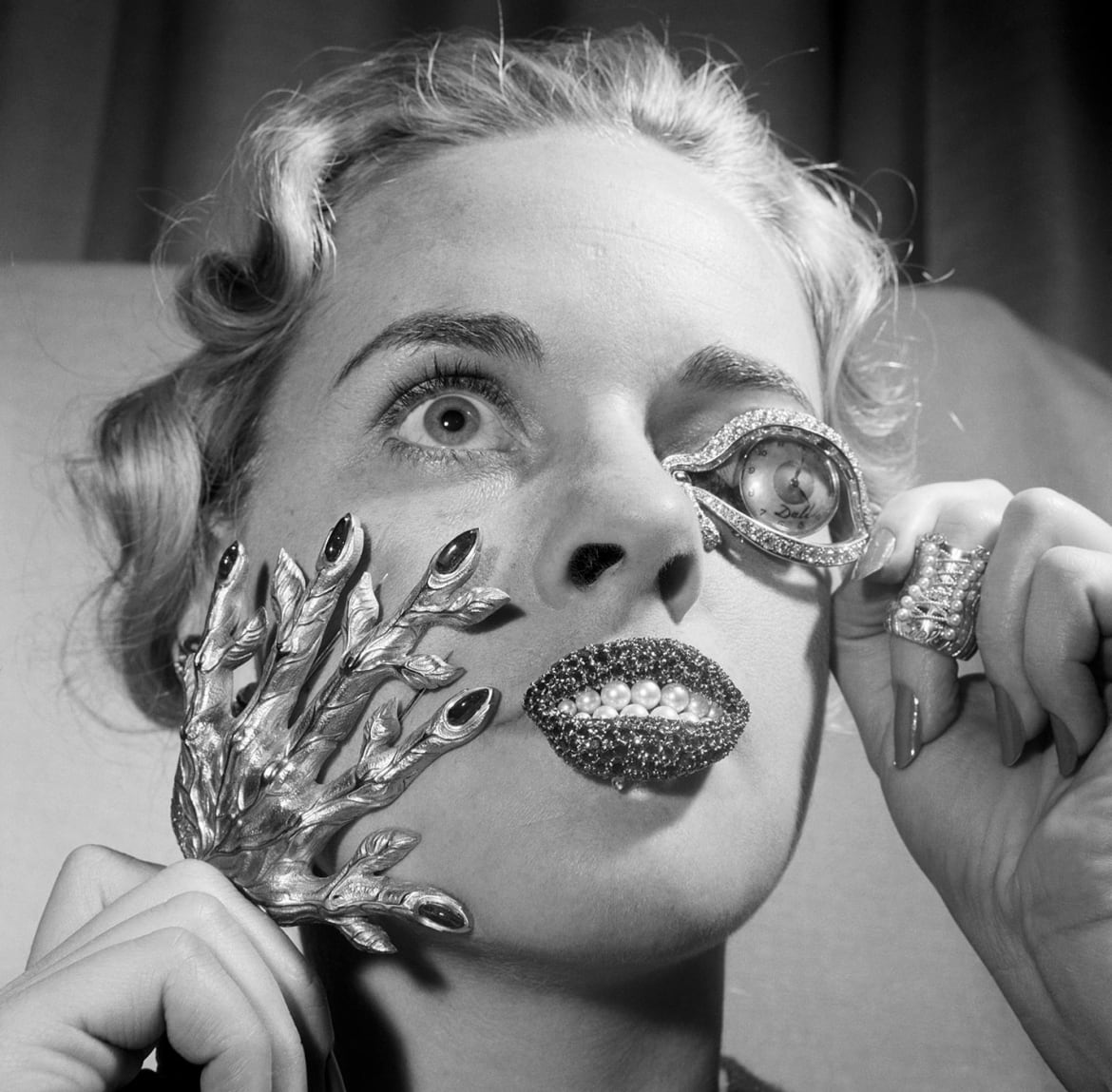
GETTY - Model Madelle Hegeler shows off weirdly striking jewelry by Salvador Dali in New York.
U.K.-based cultural historian Dr. Benjamin Wild spoke to The Daily Beast about Dalí’s jeweled work: “There is something very sensual and ‘material’ about the subject matter in Dalí’s paintings,” he said. “This almost makes a three-dimensional approach a more satisfactory means of engaging with his ideas. Many of the objects and themes that Dalí conjured on canvas were carried through into his jewellery—not least hands, animals and various orifices (eyes, mouth).
“In this sense, Dalí’s jewellery is not an adjunct to his work as an artist, but very much a central element of his oeuvre. Consequently, appreciating Dalí’s work with precious metals and stones is very much necessary for people, certainly collectors, if they want to fully understand his artistic intentions and achievement.”
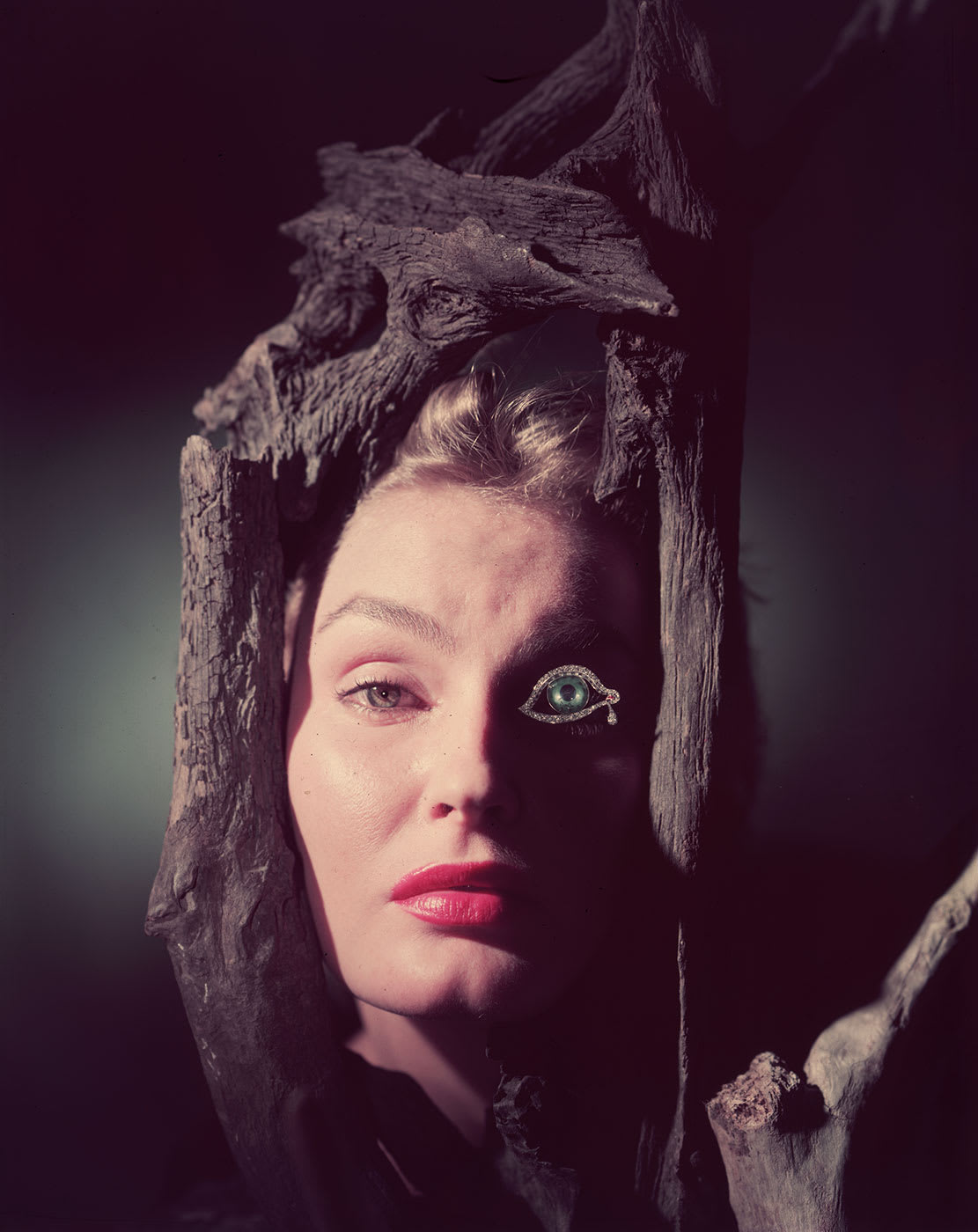
BARON/GETTY - A model wearing jewelry designed by the Surrealist artist, Salvador Dali.
Alexander Calder was perhaps the polar opposite to the extravagance of Dalí. Working in the most humble of materials as opposed to Dalí’s gold and glittering jewels, Calder was more interested in the interpersonal rather than the largesse of the world stage. Calder’s jewelry was all made by his own hand, whereas Dalí’s was designed by him, but executed by skilled jewelers.
Calder’s huge sculptures and mobiles show a continuity with the ideology that informed his jewelry. They often each use simple or non-precious materials, no solder, and reference non-Western or tribal art with hand-hammering techniques. The body activates his jewelry, giving sway and swing to an earring or sculptural necklace spiralling up from the collar bone. In the same way his mobiles are activated by space, a human being wearing his jewelry brought the pieces to life.
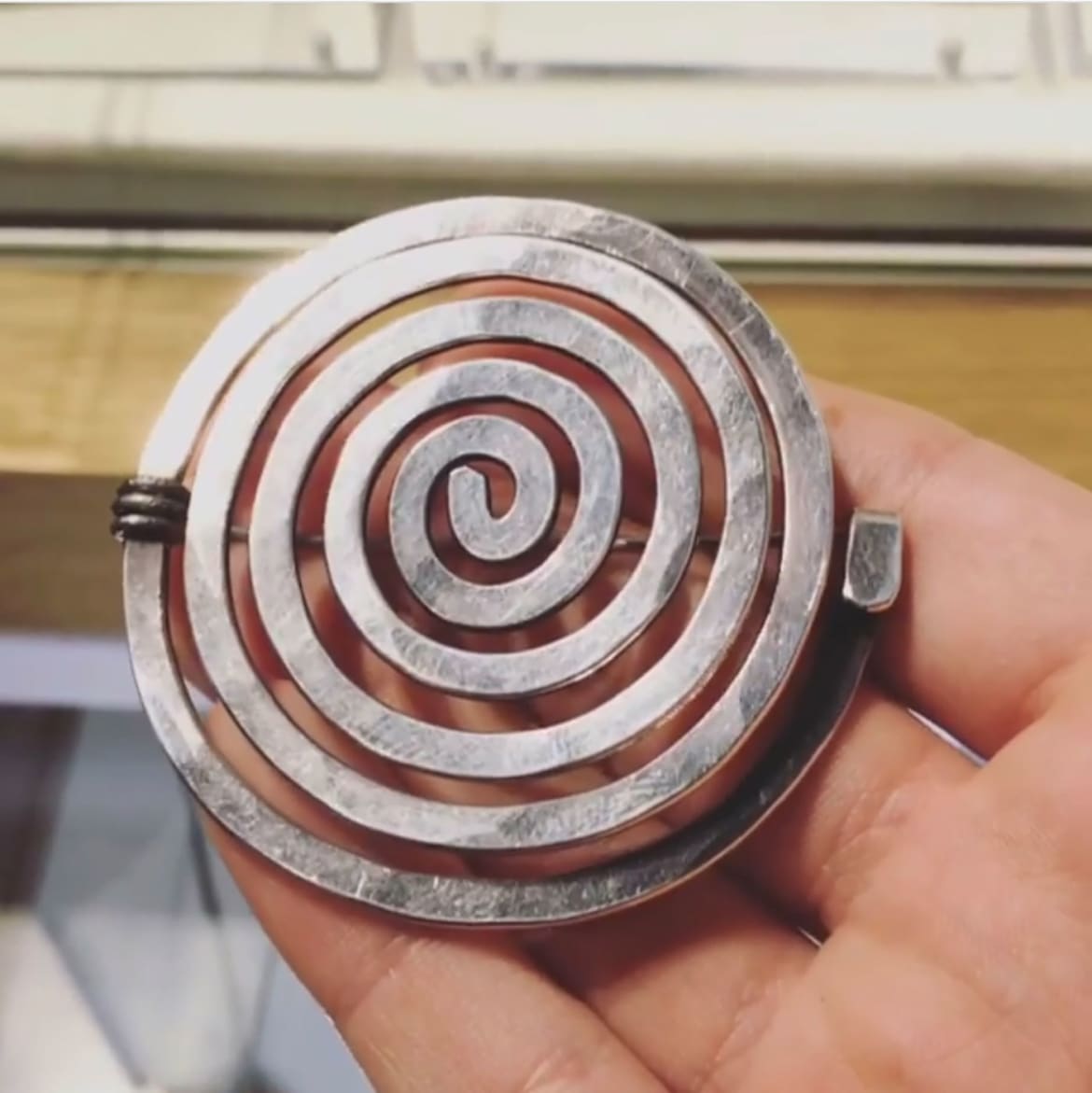
LEVI HIGGS (@LEVI_HIGGS) & @DIDIERLTD - A brooch by the sculptor Alexander Calder
To a sculptor, perhaps a jewel acted as a laboratory for experimentation, a microcosm in which to run a trial on form and relationships with shapes. If a design speaks on a small scale, what will it do expounded into the atrium of a building?
Many of the thousands of pieces of jewelry Calder made were given away to his friends, supporters, visitors, or loved ones. Peggy Guggenheim was a recipient of his jewelry. Dorothy Miller, a curator of MoMA, was as well. Georgia O’Keeffe famously wore her brass “OK” brooch quite often, and it could recently be seen on display at the Brooklyn Museum last year. These jewels were tokens of the artist himself, pieces of his work and world that someone could carry with them. He would often work in sterling silver, brass, occasionally gold, and sometimes incorporate bits of broken sea glass in place of gemstones, giving the jewels a found-object sort of quality.
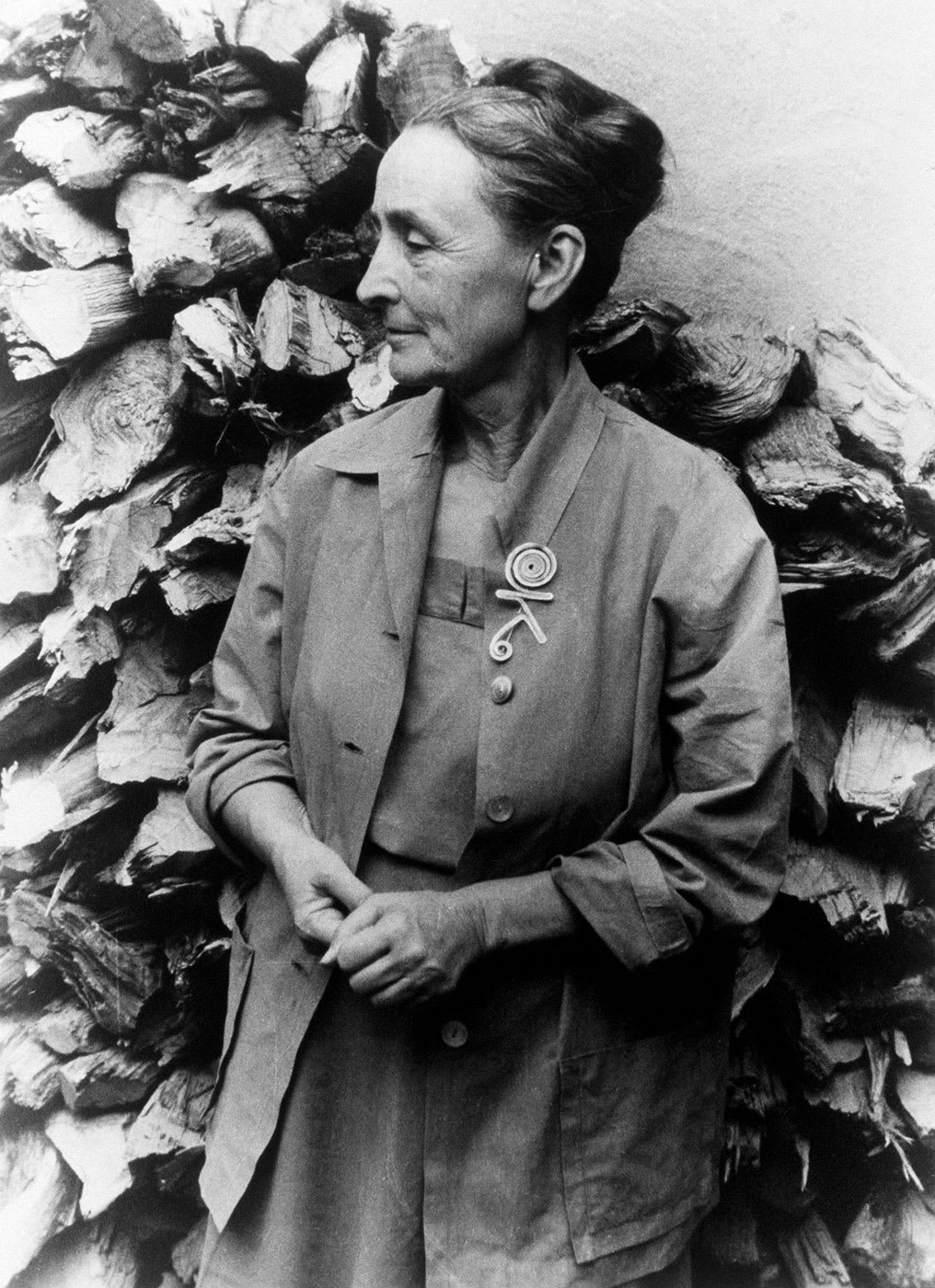
CORBIS/CORBIS VIA GETTY - The painter Georgia O'Keeffe, wearing a brooch by artist Alexander Calder.
Niki de Saint Phalle, a feminist icon of the 1970s, is perhaps my favorite of the artists who created jewelry. De Saint Phalle was French, and much of her celebrated sculptural work depicts colorful and voluptuous women, often adorned with mosaics and glimmering bits of mirror. It’s too easy to say that a radical feminist artist would want to disrupt the establishment of the female roles jewelry usually represents, but it is true that her progressive themes translate perfectly to the art form. Her enameled “Nana” figures appear as pendants on necklaces that can detach to become brooches. Some even have male components that can be completely removed, or worn on a more symbolic part of the body, wherever that may be...
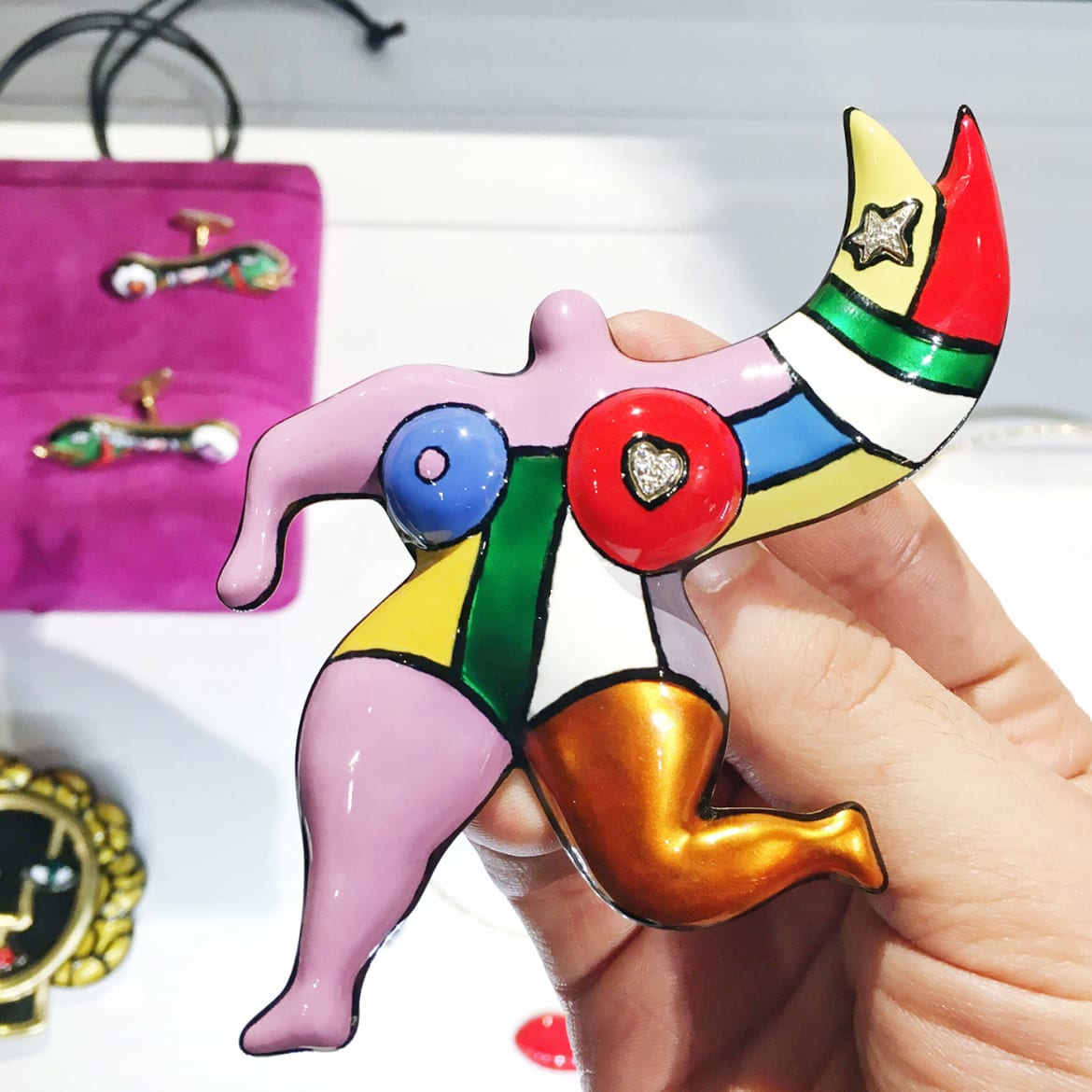
LEVI HIGGS (@LEVI_HIGGS) & @DIDIERLTD - The female form gets fine play in this Nana brooch by Niki de Saint Phalle.
Like Dalí, de Saint Phalle was the designer of her jewels, and worked closely with a jeweler to make sure the finished pieces were to her exacting standard. Her work is often what I am drawn to at art and antique fairs. It vibrantly stands out in the cases, and is satisfyingly smooth and visceral to the touch.

LEVI HIGGS (@LEVI_HIGGS) & @DIDIERLTD - French artists Niki de Saint Phalle designed this colorful snake brooch.
In stark contrast, the otherworldly creations of the Italian modernists are rough-hewn, bulbous masses of globular gold, and are often referential of the Renaissance tradition of the artist goldsmith. Artists like Giorgio de Chirico, Giò Pomodoro, and Bruno Martinazzi all created work in gold.
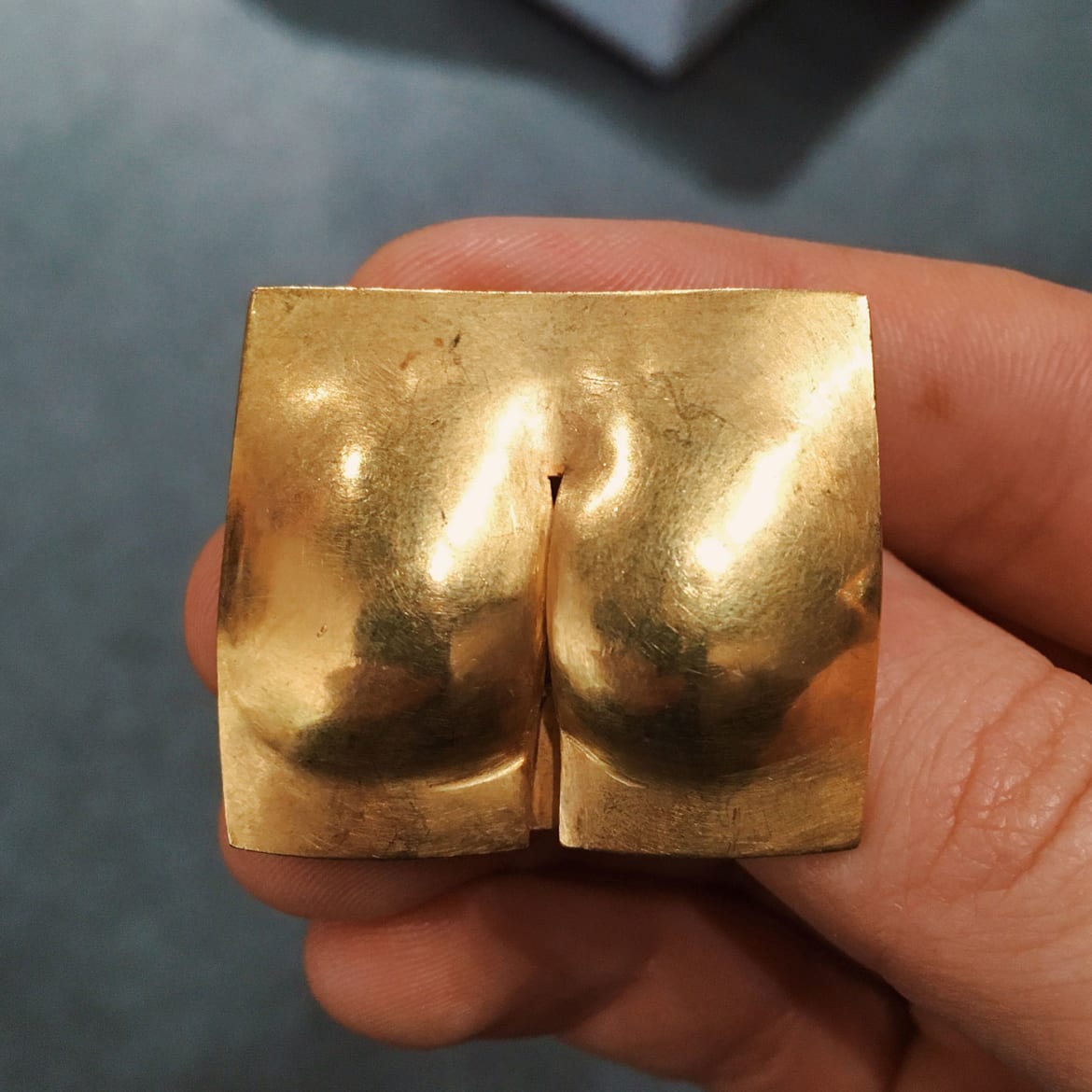
LEVI HIGGS (@LEVI_HIGGS) & @DIDIERLTD - Backside Brooch by Italian sculptor Bruno Martinazzi
One of the preeminent dealers in this type of work is the husband and wife team behind London-based Didier Ltd., Didier and Martine Haspeslagh.
Didier Haspeslagh spoke to The Daily Beast, and told us exactly what happens when these often unwieldy pieces make their way out of the art fairs and galleries and into the sunshine of everyday life:
“The wearer becomes a walking, talking work of art, disseminating their chosen artist’s work across the globe. The artist could not ask for a better advert for his work. Every piece comes with an interesting story and this—as much as the jewel itself—is the real interest factor to our clients, as it gives them a very close and personal connection with the creator and they can recognise where the piece fits into the wider body of work of the chosen artist.
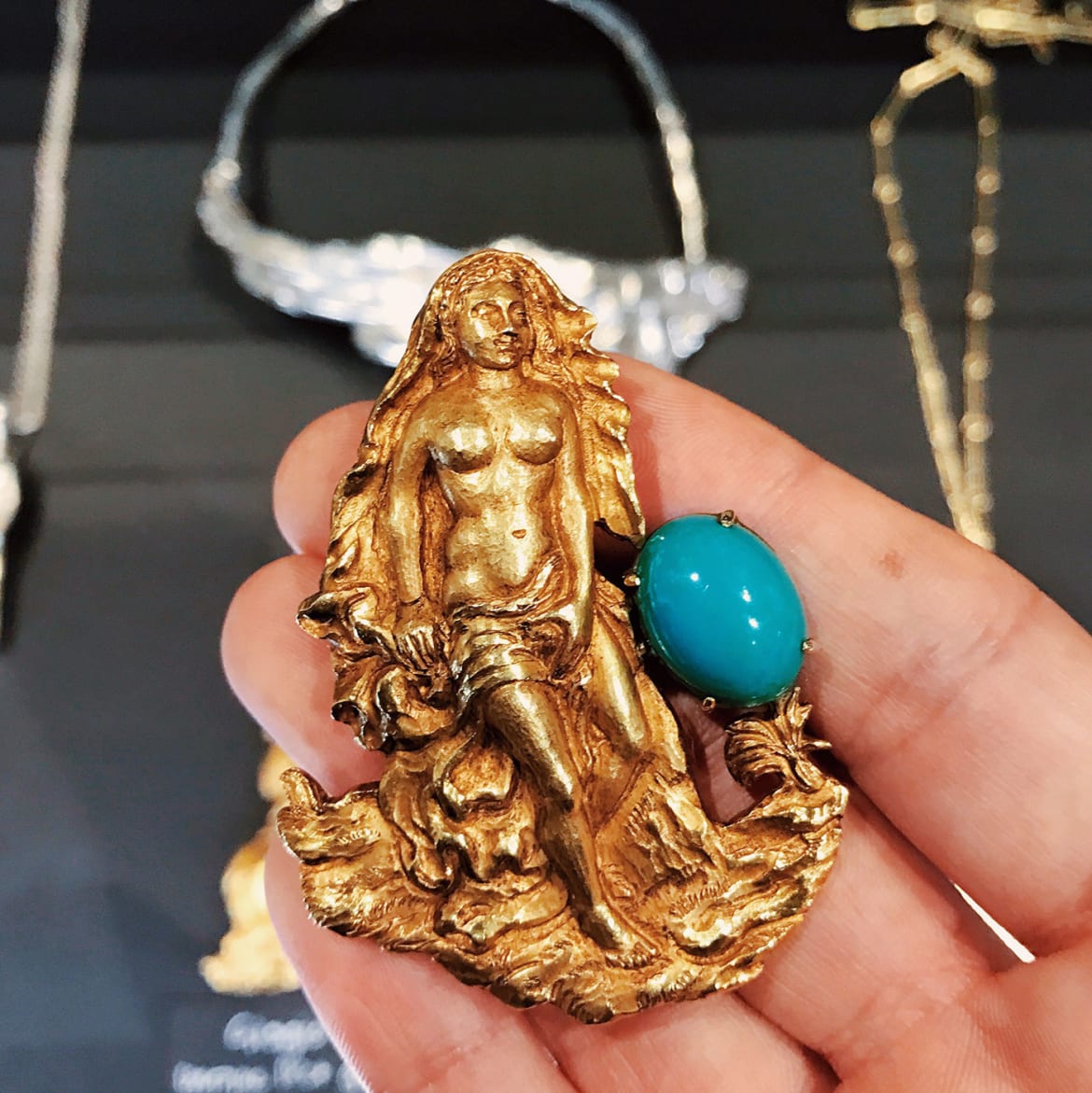
LEVI HIGGS (@LEVI_HIGGS) & @DIDIERLTD - A whimsical brooch by Giorgio de Chirico, who influenced the Surrealists.
“Larger artworks being restricted to galleries, museums, or homes, now wearable sculptures get to be seen in the street or supermarket and commented upon at parties and restaurants. Some of these private pieces were worn by the wives of the artists as an advert for the business.”
And the business of these works is definitely still booming. Another London-based gallerist, Louisa Guinness, recently published a book—entitled Art as Jewellery: From Calder to Kapoor—that beautifully covers the many astounding jeweled works created by fine artists, including Dalí and de Saint Phalle, among many others. Guinness deals in jewelry by artists, and is very clear in the introduction that her book is not comprehensive of all jewelry by artists, but it adeptly skims the surface of the topic, delving deeper here and there to great effect.

LEVI HIGGS (@LEVI_HIGGS) & @DIDIERLTD - A gilded bracelet by the Italian artist Giò Pomodoro.
Jewelry by artists exists, but who is buying it? Art world connoisseurs? Run-of-the-mill jewelry collectors? Casual Sunday shoppers? Museums or galleries? Guinness spoke to The Daily Beast, and confronted the question head on:
“I think it takes time for those not familiar with the art world to appreciate some of the jewels as they are not always what they might expect in the more traditional world of jewellery,” she said. “I think the artist’s jewels are important as an extension of the artist’s work, but equally to challenge more traditional jewellery designers to question design. As I talk about in my book, the artists are less interested in enhancing the beauty of the wearer or a gemstone, they are more interested in a message or concept.”
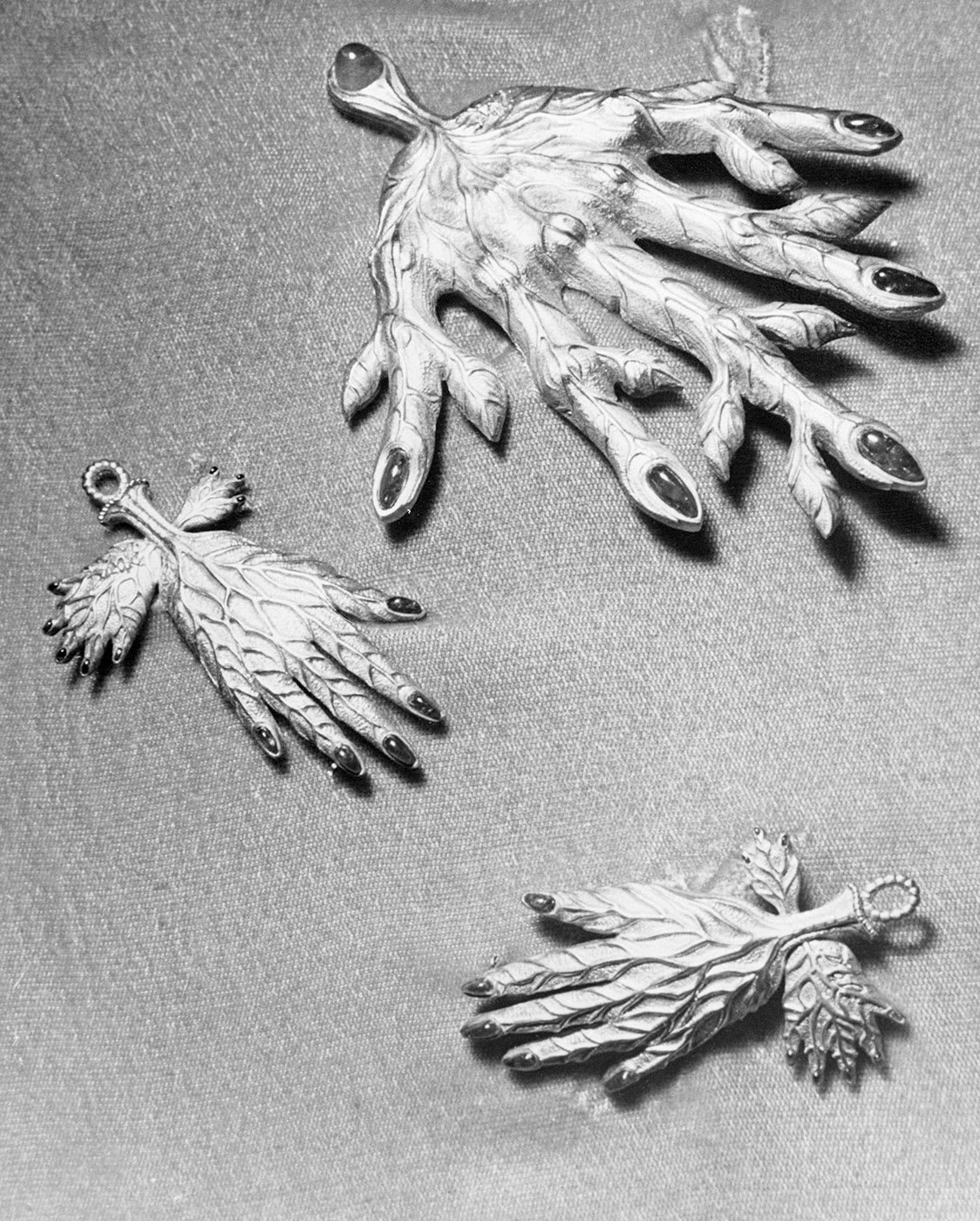
GETTY - Leaf-veined hands made of sculptured gold, rubies and emeralds, designed by Salvador Dali.
Do these seemingly high-brow concepts always hit their mark?
One of the most well-known jewelry historians of the day, Vivienne Becker, contributed a forward to Louisa Guinness’ book. She writes that, “while they seem to inhabit the same realm, there is in fact a world of difference between the precious art jewel and the artist’s jewel, conceived by an artists, painter, sculptor or architect.
“Jewellery by artists... tends to be free of the jewel’s emotional baggage; it is art for art’s sake, a miniature wearable artwork or sculpture in its own right that is part of an artist’s wider body of work.”
The ability to keep a piece of fine art close on the body, rendered in precious or semi-precious materials, allows the wearer to transcend typical adornment and become a devotee of a movement. Jewelry by artists allows people to not only express themselves, but to tap into a zeitgeist of any kind, and amplify themselves through it.
